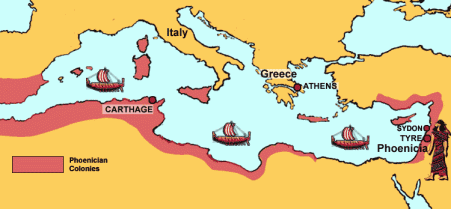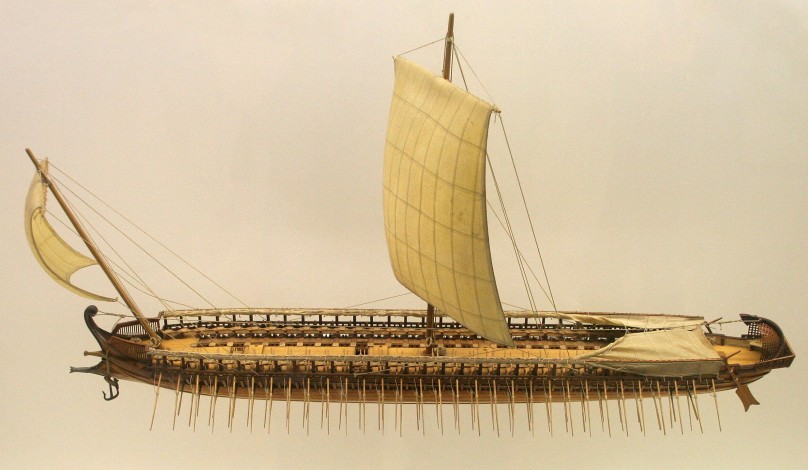40 teams in competition on the route of the Phoenicians
 The 10th edition of the prestigious Palermo-Montecarlo race has been moved forward this year, taking off next week from August 21st through the 26th, with 40 reputable teams already registered and counting, thus raising the bar of the technical standard of this famous regatta. Organized by the Circolo della Vela Sicilia together with the Yacht Club of Monaco (YCM), the 500 nautical mile course follows the route taken by the Phoenician ships. The race is a tribute to sailing expertise and nautical prowess, an attractive sporting event in the midst of a hot summer.
The 10th edition of the prestigious Palermo-Montecarlo race has been moved forward this year, taking off next week from August 21st through the 26th, with 40 reputable teams already registered and counting, thus raising the bar of the technical standard of this famous regatta. Organized by the Circolo della Vela Sicilia together with the Yacht Club of Monaco (YCM), the 500 nautical mile course follows the route taken by the Phoenician ships. The race is a tribute to sailing expertise and nautical prowess, an attractive sporting event in the midst of a hot summer.
Race Director Alfredo Ricci announced: “The starting signal, weather permitting, will be given at 12.00 on August 21 in the Gulf of Mondello in front of the Circolo della Vela Sicilia. The yachts will sail towards the flying gate of Porto Cervo, confirmed for this 10th edition. Through the gate, competitors may decide to leave Corsica to port or starboard and head towards the finish in Monaco.”
 The squadron will be heading to the Tyrrhenian Sea passing the Aeolian islands, and pursuing the wind offshore before the Strait of Boniface, invocating Aeolus the God and Ruler of the winds to set the Sirocco loose and restrain the Mistral, to then go up the coast of Corsica on their way to the Port Hercules in the Principality, their final destination, on Tuesday, August 26, after spending 3 to 4 days at sea.
The squadron will be heading to the Tyrrhenian Sea passing the Aeolian islands, and pursuing the wind offshore before the Strait of Boniface, invocating Aeolus the God and Ruler of the winds to set the Sirocco loose and restrain the Mistral, to then go up the coast of Corsica on their way to the Port Hercules in the Principality, their final destination, on Tuesday, August 26, after spending 3 to 4 days at sea.
A new website of the regatta has been recently launched to mark this important anniversary: http://www.palermo-montecarlo.it
Brave sailors from Monaco
In 2013, Pierre Casiraghi, member of the Yacht Club de Monaco’s Management Committee was the first to cross the finish line. He was on the TP52 B2 of Tommaso Chieffi, one of the most successful Italian sailors (who in 2013 added the Rolex Middle Sea Race and Copa del Rey to his trophies). Casiraghi was quoted saying: “Last year was the first time I participated in this event and discovered its magnificent route along the Sardinian and Corsican coastlines.” And he added: “I so enjoyed the atmosphere and warm welcome we received from Circolo della Vela Sicilia. Also it’s important for me to be on the starting line again to defend our title flying the Monaco Racing Fleet flag.”
Other noteworthy personalities taking part from the YCM are Adalberto Miani, who has not missed a single Palermo-Montecarlo in his position as Sailing Commissioner, and will be at the helm of his Advanced 66 Botta Dritta; Robert Lauro (Wohpe); John and Josh Warren (Nimrod); and a team of young sailors from the YCM’s Sports Section (Tsaar Peter) taking their first steps into offshore racing supported by their instructors. Attesting to the continuous evolution of this event, the novelty this year is the opening of the race to double-handed teams.
“This year is very special as we celebrate the event’s 10th anniversary – an opportunity for me to pay tribute to its creator Angelo Randazzo and his son Agostino who continues the spirit behind the race inspired by his father. This offshore regatta reflects very close ties of friendship between our two clubs which are twinned,” said Bernard d’Alessandri, Secretary General of the Yacht Club de Monaco.
Trophies
The Trophy Angelo Randazzo, in honor of the founder of the race and President of the Circolo della Vela Sicilia (1992-2008), will be awarded to the winning yacht on corrected time in the largest category (ORC or IRC).
The Trophy Giuseppe Tasca d’Almerita, in honor of the founder of the Circolo della Vela Sicilia, will be given to the first yacht crossing the finishing line in Monte-Carlo in elapsed time.
Brief information on the Phoenicians
The Phoenicians were the most able shipbuilders and sailors of the ancient Mediterranean world, with their merchant ships enabling them to trade throughout the area. They were the best marines and ship builders of the ancient world. Their strong seaworthy vessels were made with the famous Lebanese cedar trees growing in the slopes of mountains of their native land. The Phoenicians are credited with making important contributions to the marine science including the division of a circle into 360 degrees and having dependable celestial reference points.
These experienced sailors had been at sea well before the Greeks and were predominantly merchants rather than combatants, while the Greeks were focused primarily on territorial expansion and used the might of the sea as an instrument of subjugation. Therefore the divergent priorities affected the types of boats built, but as the area now known as the Levant had been a place for warring races, it should come as a surprise that the ships used by the Phoenicians incorporated features drawn from diverse sources.
Although no Phoenician ships have been excavated, sufficient is known about them from documents and reliefs to be confident about their structures. The earliest corroboration for Phoenician ships relies on an Egyptian relief of around 1400 BC at the tomb of Kenamon at Thebes that depicts their ships unloading in an Egyptian port. Another representation dates around 700 BC showing a Phoenician ship coming from the Palace of Sargon at Nineveh and shows a vessel loading timber.
Three types of ship are known. The first was a small craft with a prow in the shape of a horse’s head that was rowed by one or two men for short distances.
The second was a merchant vessel that was the mainstay of the Phoenician activity over a period of a thousand years. Their most significant contribution was the “round boat” a broad-beamed ship that depended principally on sails rather than oars and provided a much larger cargo space than the narrow galley.
The third was a warship. The merchant ships were hard to handle because of their design, which might loosely be described as the shape of a bathtub. They were large and of great capacity: a Canaanite merchantman in 1,200 BC is thought to have been able to carry loads of between 200 and 450 tons. They used square sails and were rowed in the absence of wind. The warship was lighter, propelled by oars with a full complement of fifty men and fitted with a ram. These fighting vessels were very successful in battle, due to the good design, but also to the highly developed Phoenician seamanship. Only when the Romans had caught up in technology and fighting skill did the Phoenicians suffer significant reversals in battle. The Phoenician fleet is considered today to be the first naval power in history.
Stay tuned for results on the regatta
Next week I will be reporting on the results of the regatta. I would like to finish this article with a quote from American singer Jimmy Dean “I cannot change the direction of the wind but I can adjust my sails to always reach my destination.”
![Golfo_di_Mondello_041@Andrea Carloni[1] Golfo_di_Mondello_041@Andrea Carloni[1]](https://monacoreporter.files.wordpress.com/2014/08/golfo_di_mondello_041andrea-carloni1.jpg?w=401&resize=401%2C267&h=267#038;h=267)
![5A9F1096@Andrea Carloni[2] 5A9F1096@Andrea Carloni[2]](https://monacoreporter.files.wordpress.com/2014/08/5a9f1096andrea-carloni2.jpg?w=403&resize=403%2C267&h=267#038;h=267)






Hi Celina,
I cannot find your email address so I hope this reaches you well. I am the picture editor at Boat International and I would like to use one of your images in the magazine (Princess Caroline onboard her yacht Pacha III)
Could you plase get in touch on servanne.sohier@boatinternationalmedia.com.
Thank you!
Kind Regards
Servanne
LikeLike